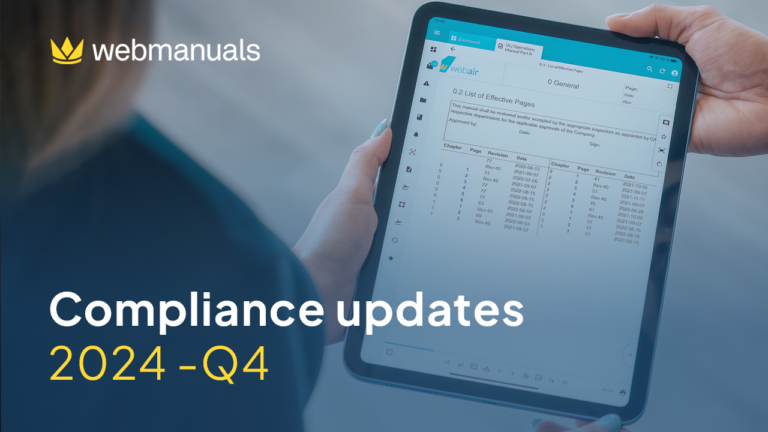By: Mikael Norrman, Development Manager
Throughout this 10-year journey, we have developed a product that facilitates aviation operations and promotes safety regulations.
The evolution from a document management software to a comprehensive tool that solves multiple difficulties for air operators, has brought many challenges and lessons learned along the way.
It began in 2012 with an aviation company in need of a better document management system. We worked closely with aviation professionals and learned early on how staying compliant with regulations is a major challenge. So, we began the development of a tool that would revolutionize the way the industry evolved towards digitalization.
The main premise was not simply to transfer physical documentation to a digital environment. Rather, we wanted to create a novel system in which air operators would discover a new, easier, and customized way to manage their documents and compliance.
Web Manuals’ first model
The initial software began as a spin-off of an existing product but its design was intended specifically to meet air operators’ needs. With the idea of having it 100% online, great opportunities and challenges arose in the panorama.
Today the cloud-based tool concept is far from original. However, 10 years ago it was groundbreaking to present a system that had all its operations and information storage in the cloud. Many had doubts that it could be a safe and reliable system, but from the beginning, the Web Manuals team understood the power of this innovative approach.
Together with our first customers, like OSM Aviation Academy, and Bromma Air Maintenance, we saw the value of digitizing manuals. Together with the aviation industry we realized the huge benefits of editing manuals with a thorough document lifecycle.
Thus, the first version solved problems regarding document editing and distribution, and served as an important tool to reduce the time and costs of manuals production.
The standardization of modules that facilitate the design of important sections such as the LEP (List of Effective Pages) and ToC (Table of Contents), made users choose our software. From there, new and innovative modules emerged gradually that automate even complex content.
Important features such as workflows, streamlined review, and tailored control for each document, quickly set our product apart from the competition.
Early stages of aviation documentation evolution
After slightly growing in size and reaching new companies in different parts of the aviation industry, the real potential our tool had was clear. Over time we have refined the product, both conceptually and technologically, to grow accordingly with our rising goals and dreams.
In a strategic development based on feedback from our clients, we designed the Compliance Libraries in 2013. This library not only stores and automates regulatory updates that apply to the different aviation sectors, but also connects them with the specific parts of the manuals that require such regulations.
Working hand in hand with the most important regulatory entities in Europe and America, we began to assemble a large repository that gathered the essential regulations of our clients. Little by little, the library has expanded and is now connected to the validation and approval processes with some traditional regulatory entities.
By the release of version 7, we achieved complete independence from the previous code which allowed our team to evolve the product at a faster pace.
Expansion and innovation stage
Leveraging the experience of using Web Manuals, we develop innovative modules to simplify processes supporting efficient daily operations of flight operators.
In addition, we continuously increased the security of the service, protecting what’s most important for our clients. We’ve implemented complex security systems that protect information and electronic devices, as well as audits and constant controls to monitor the quality of our internal processes.
Current state & future developments
Web Manuals version 8 was released in 2021 and with it dozens of improvements in the usability, interactivity, and user experience. With a modern framework, we eased compliance monitoring with full traceability and facilitated faster audits.
Currently, the product has demonstrated its effectiveness in reducing production times and automating time-consuming tasks in document management. But most importantly, it has changed the way businesses stay compliant and promote safety.




